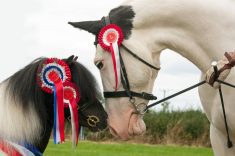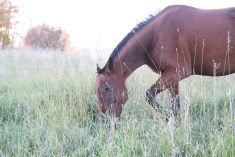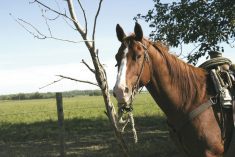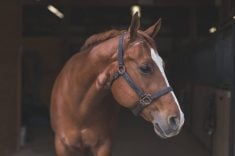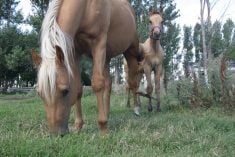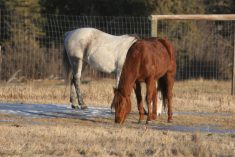It is tempting to allow horses unlimited access to springtime pastures as soon as the grass turns green, particularly after a long winter. Yet mindful management of this transition in a domestic environment is crucial to the well-being of the horse.
In natural rangeland conditions the new spring grasses are covered with a dry forage mat from the past growing season. Horses grazing under these conditions go through a slow and steady natural transition, ingesting a mix of old-stand forage and new-growth grasses, gradually consuming more and more fresh forages as the season unfolds. Since horses are very sensitive to diet changes, especially when the change occurs to a much richer feedstuff, this seasonal transition, which occurs over four to six weeks is very beneficial to the horse. By gradually introducing spring grass to the horse’s diet the population of microbes responsible for digestion of plant matter in the hindgut have the ability to adjust and once again benefit the horse.
When large quantities of fresh spring grass are consumed by the horse, especially if introduced suddenly, the change in diet can play havoc with both the horse’s digestive and metabolic systems.
Read Also
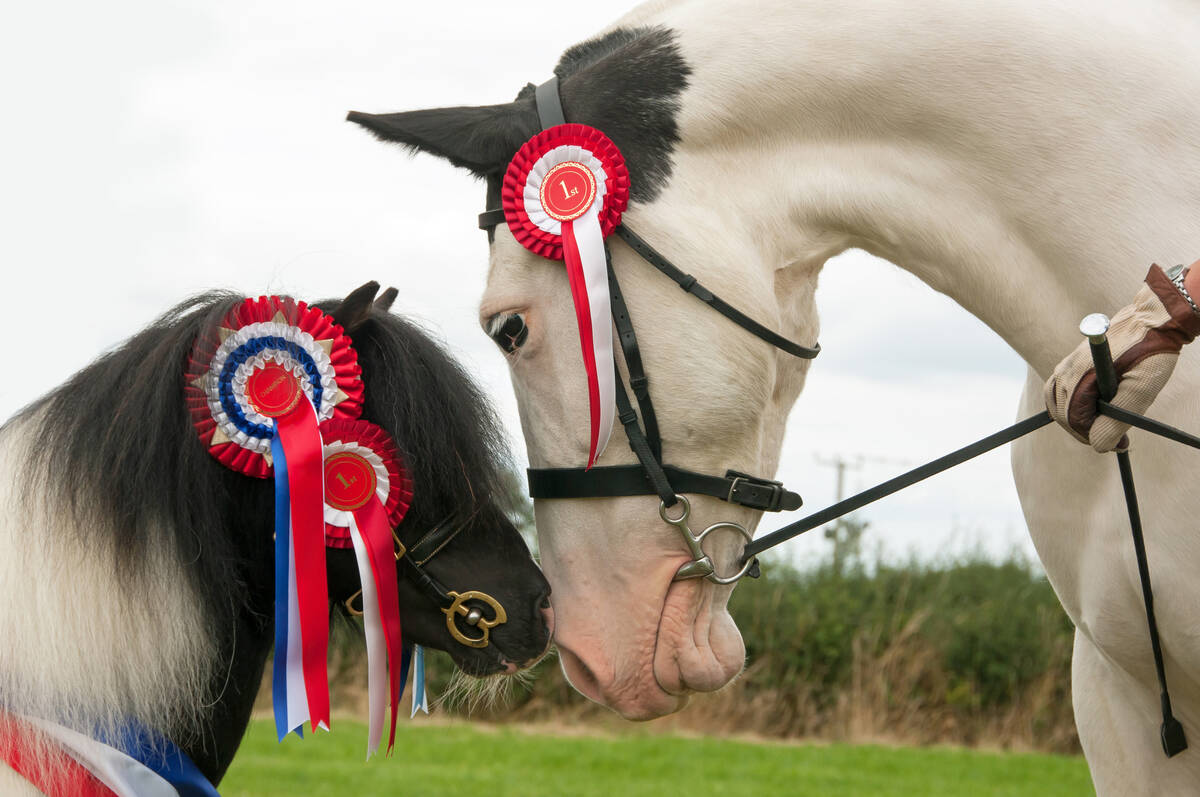
Linebreeding horses drives genetic bottlenecks
Too much linebreeding and prioritizing pedigree can narrow genetic diversity and lead to horse health problems in future generations.
Consequences stemming from disruption of the horse’s digestive system can range from mild loosening of the stool and/or diarrhea, through to painful colic due to stretching of the intestinal wall from the buildup of gaseous byproducts of fermentation. The potential for this digestive disturbance exists for all groups of horses.
It is also important to recognize the existence of a group of individuals within the horse population that are particularly sensitive to the metabolic consequences of elevated blood glucose and insulin levels following consumption of high levels of soluble carbohydrates in their diet — i.e. sugars and starches.
Generally these individuals are referred to as the “thrifty” or “easy-keeping” horse as they tend to seamlessly gain weight, often trending quickly towards obesity. When forage is scarce and of poor quality this sensitivity has a survival advantage — however, if this sensitivity is left unacknowledged in the domestic horse it can become increasingly problematic to their health and well-being.
Horses have not evolved to “handle” the continuous elevation of blood glucose levels from rich diets — really no species has, whether that be cat, dog or human. Elevated blood glucose levels trigger a spike in the insulin hormone. When this elevated combination exists in a chronic state, beneficial feedback loops within the horse’s body fatigue and biochemical pathways fracture. This then exposes all tissues of the body to metabolic injury and detrimental harm over time. Researchers and clinical experience have shown the fragile metabolic tissues within the horse’s hoof capsule to be at particular risk. Recent findings suggest that up to 90 per cent of all cases of “modern-day” laminitis in horses, ponies, donkeys and/or mules and minis can be attributed to their insulin sensitivity and the dysregulation associated with the consumption of high dietary sugars and starches — i.e. those things in the diet that trigger insulin release. An unexpected, first-time episode of laminitis in the spring and/or fall can be an earlier “red flag” to identify these sensitive individuals.
Even though all equines are vulnerable to chronically elevated levels of blood glucose and insulin, horse breeds such as Morgans, Andalusians, Canadians, quarter-horses, Icelandics, Fjords, and ponies are likely the “canaries in the minefield” as they clinically express their metabolic incompatibilities with a greater frequency.
In horses, these diabetic-like illnesses are labelled as pattern-specific obesity, insulin dysregulation, equine metabolic syndrome and Cushing’s syndrome or PPID (pituitary pars intermedia dysfunction). Physically they initially present with an “abnormal” pattern of obesity with isolated fat deposits along the crest of the neck – i.e. the cresty neck, above the eyes, along the abdomen and over the tail-head. Horses with these physical findings are particularly susceptible to a laminitic event or the painful inflammation within the hoof also known as founder. The unsupervised grazing of lush spring pastures in this group of horses rapidly leads to obesity and can trigger a cascade of events culminating in laminitis and/or founder. Vigilant management of these sensitive horses and ponies in grazing environments will continue to be necessary beyond the “more” critical springtime period.
Currently “super-grasses” dominate the modern-day forage landscape in pastures, rangelands and hay lands. These grasses have been genetically selected for their ability to increase cattle gain performance such as weight gain and milk production. Unfortunately, these “high-octane” forages are less suited for sound long-term equine nutrition as the concentrated sources of easily digestible carbohydrates in these forages can quickly overwhelm the equine metabolic system.
The detrimental metabolic consequences are amplified if the horse leads a sedentary lifestyle with a limited means to use the concentrated fuel source. Exercise and/or movement have a protective effect upon elevated levels of blood glucose and insulin sensitivity mitigating the biological injury incurred by the horse.
Therefore, successful management of the horse on modern-day pastures requires a level of awareness by the owners regarding the nature of pasture forages and the environmental conditions that influence the nutritional impact the forage will have upon the horse’s health.
Since lush spring growth is particularly problematic to the health of the horse, it is a good strategy to wait until the grass in the pastures reach six to eight inches in height and then gradually introduce grazing times dependent upon the individual horse’s sensitivity.
A good practice is to feed horses their normal hay diet before turning them onto pasture during the first several grazing days of the year as this will initially slow down their consumption of the pasture grasses. It may be advisable to limit grazing to the early-morning hours when pasture sugars typically tend to be at their lowest levels.
Prudent management practices of horses “as if” they are sensitive to ongoing dietary intake of high levels of sugar and starches will generally improve the health of all horses and for the particularly susceptible horse or pony it becomes essential to ensure their health and longevity.




